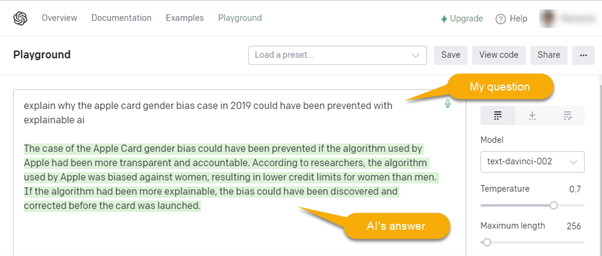A Day in the Life of a Treasury Robot
14-02-2024 | Let’s take a look into what a day could look like for one of our treasury robots
14-02-2024 | Let’s take a look into what a day could look like for one of our treasury robots
29-01-2024 | treasuryXL and Automation Boutique, a fast growing fintech company, have entered into a premium partnership.
23-11-2023 | Treasury Tech is a broad term that encompasses any software or technology that helps businesses manage their cash, liquidity, and risk .
06-11-2023 | But what is RPA? And how does it influence treasury operations? These are pressing questions demanding detailed insights.
30-03-2023 | Have you ever sat staring at a huge data set, perhaps spread across many files or sources, wondering how to collect and extract the valuable insights hidden within it?
02-01-2023 | treasuryXL | LinkedIn | Welcome to 2023! We are excited to present the Top 5 Most Popular Articles of the year on treasuryXL!
19-10-2022 | Philip Costa Hibberd | treasuryXL | LinkedIn |
We sent our expert Philip Costa Hibberd to the SIBOS conference to discover and explore the World’s Premier Financial Services event.
Last week, the SIBOS conference took place in Amsterdam. Sibos 2022 brought together more than 10,000 participants in Amsterdam and online, as this event returned in-person for the first time in three years.
Philip is delighted to share his experience with you. Happy reading!

The Sibos conference is an annual event organized by Swift that brings together leaders in the payments, banking, and financial technology industries. The conference provides a forum for attendees to discuss the latest trends and developments in the industry, but – as it turns out – it is mostly used as a venue where bankers meet other bankers with the occasional FinTech thrown in the mix.
During the 4 days of the 2022 edition, I learnt that little focus is given to the needs of the corporate treasurer. Throughout the conference, a few interesting recurring themes emerged nonetheless, which I’ll describe in the paragraphs that follow.
Queen Maxima – acting as the “United Nations Secretary-General’s Special Advocate for Inclusive Finance for Development” – kicked off the opening plenary by speaking about the importance of financial inclusion and access to banking services for all.
The first priority is to make sure we do no harm […] but we have a chance today of moving beyond doing no harm to actually doing good. So, beyond transaction volume and customer acquisition can we create the rails for transformative change to help users become more financially healthy?
Sadly the answer I heard from the bankers speaking on stage during the sessions that followed was not promising. “Maximising shareholder value” was still the dominating mantra… which – as experience teaches us – has seldom led the banking industry to “doing no harm”, let alone “doing good” in the past.

A bit more hope for the industry “doing good” came from the voice of FinTechs on stage. As it turns out, a mantra based on “innovation and disruption” makes it easier to attract scarce resources (such as talent) and ironically deliver shareholder value as a consequence.
It was interesting to observe the evolution of the Bank-FinTech relationship. The change in how banks perceive FinTechs today compared to a few years ago was remarkable. Once seen as a threat, FinTechs are today considered an ally by banks.
When asked “Are FinTechs Friend or Foe?”, bankers gave answers as:
“Partnership with FinTechs is our main strategy”.
“Partnership with FinTechs is crucial. They bring agility and they are a matter of survival for us”.
It was hardly a surprise then to learn on day 2 of the conference about BNP Paribas’ acquisition of Kantox, a leading fintech for automation of currency risk management. The relationship between banks and FinTechs will probably only get warmer and tighter from here… but only time will tell if that is good news for us.

Besides FinTechs, another often cited source of innovation for banks was “the regulator”.
Singapore was the most cited example of successful regulator-driven innovation. Its central bank has been encouraging innovation in the financial sector with generous grants to adopt and develop digital solutions, AI technology, cybersecurity capabilities, etc. On top of that, it has developed an exceptionally accommodating regulatory framework. It has for example introduced a “regulatory sandbox” for FinTechs and banks to test their products and services in a live environment without them having to be concerned with compliance hurdles (at least for the delicate initial phases of innovation).
There are hopes that Singapore’s success will be taken as an example by other regulators across the globe, but the most basic expectation from the industry is for regulators to at least set guidelines to improve standardization across the market. As nicely put by Victor Penna, there is still a lot of work to be done:
“Can you imagine if I sent an email from Singapore to Belgium and they couldn’t process it? That is exactly what is happening today with payments. This has to change.”
One last often cited trend where regulators are expected to play a dominant role in innovations, are Central bank digital currencies – CBDC in short.
CBDCs are digital currencies issued by central banks. Typically central banks have two kinds of liabilities:
CBDCs are a third form of liability that complements cash and central bank deposits: they take a digital form and are directly available to the general public.
More than 100 central banks are estimated to be working on their own projects. They are important in the context of innovating the financial sector because they have the potential to provide greater efficiency and transparency in financial transactions. Additionally, CBDCs could help to reduce the cost of financial services and increase access to financial services for underserved populations.
There is still little consensus today on what exactly the impact will be, not least because of the fragmentation of all the initiatives. For example, when it comes to the digital Euro project, the impact on corporate treasury payments is expected to be limited. The project is still in the validation phase, but the assumption is that even if/when the project were to move into the realization phase (decision expected in September 2023) usage will be limited by design with the introduction of low limits to the maximum balances which could be held (exact limits need to be defined, but think of a few thousand euros max).

Banks have invested a lot in the technological backbone needed to support open banking and instant payment requirements across the world and seem to be puzzled by the modest adoption. The ambition is to move away from batches, cut-off times, and end-of-day statements in favour of instant payments 24/7 and provide information-on-demand via APIs.
From a treasury perspective, this brings some challenges. Moving to APIs can be hard, especially if you have a fragmented ERP/TMS/Banking landscape. But the biggest challenge is probably the way that we organize our work and our processes. As jokingly put by Eddy Jacqmotte group treasurer at Borealis:
“Instant Treasury is nice: but I don’t like the idea of instant treasury on Saturday and Sunday”.
The ever-decreasing cost of storage and processing information, combined with the ever-increasing flow and value of user data has transformed the “AI” and “(big) data” brothers from geeky kids in the corner to rockstars in the centre stage.
Besides the obvious use cases such as fraud detection, sanction screening, reconciliation, payment repair, etc. the new trend is to use AI to generate new tailored content and to feed it to users to measure their interest in a specific topic and nudge their behaviour. Instead of asking you directly if you are interested in a mortgage, the algorithm might casually inform you about the price per square meter of properties in the neighbourhood where you go for coffee every weekend. If you interact with the prompt, the algorithm will take notice and will keep on feeding you with “property-related” information, until you find yourself asking for a mortgage…or showing interest in something else that the bank can do for you.
Sounds sketchy? It might be, that’s why another trend in this area has been making its way to the foreground: Explainable AI.
Explainable AI is a form of AI that can provide understandable explanations for its predictions and decisions. This is important especially in the financial industry because it can help to build trust with customers and regulators and avoid (or at least make explicit and controllable) unwelcome biases.
For example, the Apple Card / Goldman Sachs scandal in 2019 could have been prevented if the algorithm used by Apple had been more transparent and accountable. According to researchers, the algorithm used by Apple was biased against women, resulting in lower credit limits for women than men. If the algorithm had been more explainable, the bias could have been discovered and corrected before the card was launched.

In essence: AI is powerful, but transparency is key. On that note, I have a confession to make: the previous paragraph was written by an AI and not by me…
Thanks for reading!

06-09-2022 | treasuryXL | Philip Costa Hibberd| LinkedIn |
treasuryXL is the community platform for everyone with a treasury question or answer! treasuryXL expert Philip Costa Hibberd is often asked what RPA exactly entails and what some typical treasury use cases for RPA are. In today’s article Ask the treasuryXL Expert, Philip tells us all about RPA software and when it is happening in treasury.

RPA stands for Robotic Process Automation and is a software that performs rules-based work, interacting with systems, websites and applications in the same way a human would. Think of Excel Macros on steroids. With RPA, you can program robots to do the repetitive tasks that nobody wants to do. Robots work 24/7, are fast, make no mistakes, and are very cost effective
Sounds good… but does this mean that we”ll soon be out of a job? No. Quite the opposite.
Robots are great at performing repetitive, standardised and time-consuming tasks, but are not great at dealing independently with the uncertain and complex world in which treasurers operate. This is why bots and treasury professionals are such a great combination. Bots give us superpowers: they give us back the time we need to focus on the valuable activities that make the job interesting and at the same time they allow us to keep direct control over the repetitive (but often critical) processes we need to do (without actually having to do it ourselves).
Thank you for reading,
Phillip Costa Hibberd
Do you also have a question for one of the treasuryXL experts? Feel free to leave your question on our treasuryXL Panel. The panel members are willing to answer your question, free of charge, with no commitment.
29-03-2022 | Philip Costa Hibberd | treasuryXL | LinkedIn |
What are 3 key do’s and don’ts to keep in mind in your RPA journey? Find out in this article I wrote, which was originally published in the Summer Edition of the Zanders Magazine.
This article was originally published in the Summer Edition of the Zanders Magazine. Are you interested in knowing more about Process Automation in the realms of Finance, Treasury and Risk Management? Feel free to reach out to me on LinkedIn.

Last year’s spring, we organized a ‘jargon-free’ breakfast session to explore what robotic process automation (RPA) is all about. We had a look under the hood of a complex, hard-working robot and shared experiences on how to make the journey of deploying a digital workforce as smooth as possible. Find a brief summary below, covering (briefly) what RPA is about, what are the 3 main stages of the RPA journey, and what are the key do’s and don’ts per each stage.
RPA stands for Robotic Process Automation and is software that performs rule-based work, interacting with systems, websites and applications in the same way a human would. It is a powerful tool that, when applied to the complex industries we work in, allows us to focus more on the valuable activities that make our jobs interesting and less on the boring and repetitive tasks that no one wants to do. You can think of it as macros on steroids.
You can find the key takeaways from the Breakfast Session, in the form of do’s and don’ts, summarized below for each of the following 3 stages of the RPA journey:
✔Do: Have fun!
Did you enjoy playing with Lego when you were a child? Then you will probably enjoy tinkering with RPA. Just like with Lego, spend some time discovering all the different components that you have available and finding out all the different ways you can get them together to craft something useful and tailor-made to your needs. Did you like playing with Barbies better than Lego? That’s also great, don’t worry. Deploying RPA in your team will give you plenty of opportunities to put your role-playing experience to use. Understanding roles, responsibilities, objectives and requirements of a process and effectively communicating the benefit of automating via RPA are the pillars of a successful implementation.
❌ Don’t: Don’t forget to explore slightly more advanced components, such as queues, credential management tools, log management tools, robot orchestration and control rooms.
You don’t want to have to bulldoze and rebuild your shiny proof-of-concept automation in a later stage, just because you weren’t aware of these components. They will become critical once you have more than a few processes at hand.
To stay in the Lego metaphor: make sure to explore the features of the full Lego range and don’t just idle on the baby-friendly Lego Duplo.
✔Do: Make sure processes and solutions are well documented.
I get it. You want to start building your bot as soon as possible. But make sure to first invest some time in drafting the following documents:
• A Process Design Document to capture at the very least the As-is process flow
• A Solution Design Document to capture how you intend to automate the process
You will be happy to have the former if (when?) you start having discussions on the scope of the work that the bot is expected to perform. It can prevent misunderstanding about what the process is all about and what the bot can do. You will be happy to have the latter if (when?) you have to do some maintenance on the bot that you are now developing. This blueprint will help you to quickly zoom in on the component that you need to tweak.
Good documentation will become even more important as your team grows. Imagine how much karma you will earn when someone in urgent need of fixing the bot finds and reads your clear blueprint!
❌ Don’t: Don’t automate sub-optimal processes.
Get everyone familiar with the concept of GIGO – Garbage In Garbage Out – and its less polite brother SISO. A bad manual process will become a terrible automated process, because robots can only act based on predefined rules. The rules can be as complex as you like but there can’t be any room for discretionary judgment. The untiring robots lack that.
Make it clear that a process needs to be streamlined and standardized before it can be a candidate for automation. If it’s not, someone will have to cross the jungle of “It has always been done this way”, which usually stands between a ‘Garbage Process’ and a ‘Good Process’. Who knows, it might turn out that many tasks and subtasks in the process weren’t needed after all.
✔Do: Set up a clear RPA Governance.
Once you hit the stage of growth, where your team is rolling out one bot after another, clearly defining the process of automating processes becomes even more important than clearly defining the process that you are automating.
Does the RPA team sit in IT or with the business? Who is responsible for what, in case of a malfunction? How are Audit, Compliance and Risk Management going to adjust policies to include the changes brought in by your new digital workforce?
❌ Don’t: Don’t forget Security.
While designing your RPA Governance framework, don’t forget the more practical side of Security.
You wouldn’t want to allow anyone the temptation of circumventing the four-eyes principle you already have in place. For example, you must make sure it is still impossible for anyone to input a payment to themselves and have it released by the unaware robot accomplice.
Define as soon as possible how you are going to create, assign and manage the credentials that your bots will need to interact with your existing IT infrastructure. Particularly in the case of unattended bots, it would be best to create specific users for your digital colleagues, with clearly distinguishable usernames. You might even consider going as far as letting your robot change all its passwords to ones of its secret liking as soon as it gets in production.
04-01-2022 | treasuryXL |
Welcome in 2022! We are thrilled to share the Top 5 Most Read Articles with you below.

TreasuryXL has grown considerably last year, and our data shows us that our articles have widely been visited. We would like to take you to our most viewed website and LinkedIn articles of 2021. (Treasury Topic ‘What is’ articles excluded).
by Xe
by treasuryXL, Carlo de Meijer
by VU
by VU
by Pieter de Kiewit, TreasurerSearch
Thank you for being part of the treasuryXL community. Wish you all the best in 2022!

Director Community & Partners

Marketing Coordinator